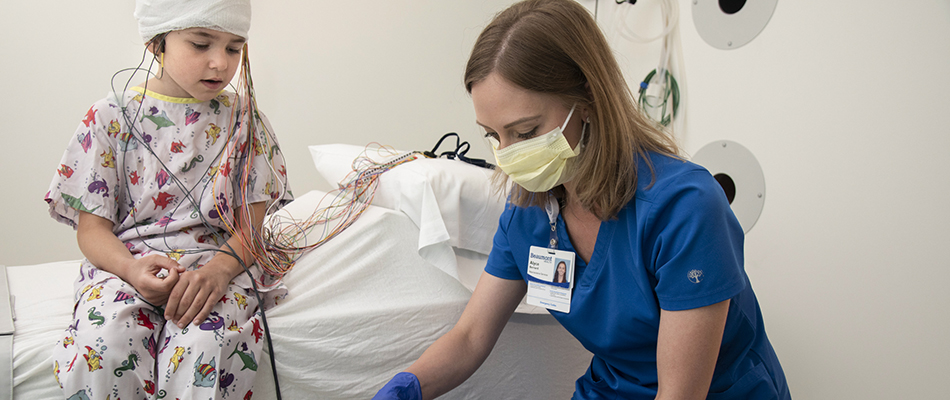 Magnetoencephalography, or MEG scan, is a non-invasive tool that identifies brain activity and measures small magnetic fields produced in the brain. The scan measures neuronal signals and records the magnetic field created from electrical currents of
the neurons to pinpoint the source of seizures. The scanner, used to detect and amplify magnetic signals produced by the brain, does not emit radiation or magnetic fields.
Magnetoencephalography, or MEG scan, is a non-invasive tool that identifies brain activity and measures small magnetic fields produced in the brain. The scan measures neuronal signals and records the magnetic field created from electrical currents of
the neurons to pinpoint the source of seizures. The scanner, used to detect and amplify magnetic signals produced by the brain, does not emit radiation or magnetic fields.
What to expect
- the MEG scan causes no discomfort
- when the scanner is on, it makes no noise
- the patient’s head must be kept still; a technician immobilizes the patient’s head by placing cushions on both sides of the head
- while keeping the head still the patient may be asked to move parts of their body or to feel, listen, look at or read to create brain activity
- an electroencephalogram (EEG) is also performed during this time
The scan takes approximately four to five hours and is performed in the MEG Laboratory in a specially shielded room, equipped with video and intercom systems so a technician can see, hear and communicate with you at all times.
Preparing for the test
- hair should be washed the night before the test
- do not use any oil, gel, mousse or hairspray
- do not braid or pull up long hair
- do not use any hair extensions
- hair should be loose for the test
- patients should arrive sleep deprived or tired as the MEG test needs to be done in the awake drowsy and sleep states
- eat as normal before the scan
- take medications as usual
- do NOT drink any caffeinated beverages on the morning of the test such as caffeinated soda (pop), coffee or tea
Metal can interfere with the scan patients are asked to change into a gown before
the test and may not wear the following:
- clothing with metal zippers or snaps above the waist, including a bra with underwire
- jewelry or a wristwatch
- body piercings (jewelry must be removed)
- any type of makeup, lotion or cream on the face or body
- glasses need to be removed before the test; contact lenses may be worn
- please notify the MEG department in advance if the patient wears braces or has a permanent retainer or if they have an electronic implant such as a pacemaker or a vagus nerve stimulator
Children undergoing a MEG scan:
Children are encouraged to bring a “comfort” item such as a stuffed animal or “blankie” to hold during the test. Most children are able to have the MEG without any kind of sedation; however, if sedation is ordered for a child there
are important rules for eating and drinking that must be followed the night before and the day of the test.
Test results
The MEG scan can provide valuable information used by doctors to locate seizure focus and determine if a patient is a candidate for seizure surgery. Results from the MEG test are matched with a magnetic resonance image (MRI), which is
an anatomical picture of the brain. The MEG, EEG and MRI work together to create a “map” or magnetic source image (MSI), to show areas of normal and abnormal activity in the brain.